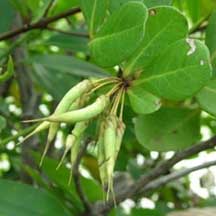 |
|
| plants text index | photo index |
| mangroves |
| Kachang-kachang Aegiceras corniculatum Family Primulaceae updated Jan 2013
Where seen? A rare shrub. According to Ng, it was found
in various northern sites and Pulau Unum. According to Hsuan Keng,
it was found in mangroves including Tuas, Changi, Lim Chu Kang and
Pulau Ubin. According to Davison, it is found on Pulau Unum, Sungei
Khatib Bongsu, Sungei Mandai, Pasir Ris Park, Lim Chu Kang and the
Western Catchment. Elsewhere, it is characteristic of the outer,
seaward fringe of mangroves and usually appears as an isolated shrub,
never forming a conspicuous part of the community. According to
Burkill, it likes light and is never found under the shade of mangroves.
Instead, it is 'abundant' on mud above the high water mark. According
to Giersen, it tolerant of a wide range of salinity, soil and light
conditions and most commonly found in back mangroves that are inundated
by the normal high tide, in sandy substrates. It is found from India
to New Guinea and common in the mangroves of Malaya. According to
Tomlinson, it is widely distributed from Sri Lanka to South China
through the Malay archipelago to Polynesia and northeastern Australia
to New South Wales. |
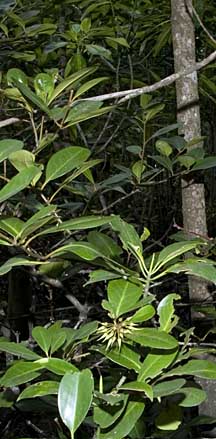 Kranji Nature Trail, Apr 11 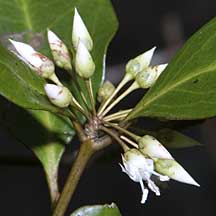 Kranji Nature Trail, May 11 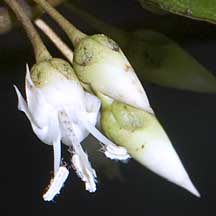 |
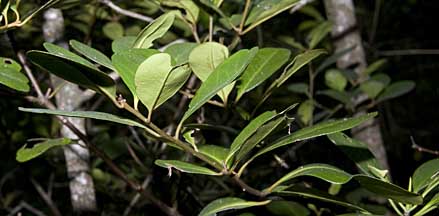 Alternating leaves in a spiral. Kranji Nature Trail, Apr 11 |
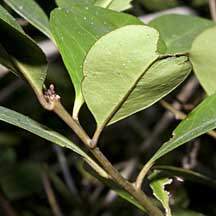 Kranji Nature Trail, Apr 11 |
|
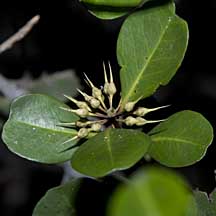 Kranji Nature Trail, Apr 11 |
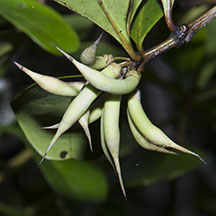 Pulau Tekong, Nov 11 |
| Kacang-kacang on Singapore shores |
| Photos of Kacang-kacang for free download from wildsingapore flickr |
| Distribution in Singapore on this wildsingapore flickr map |
|
Links
References
|
|
|
